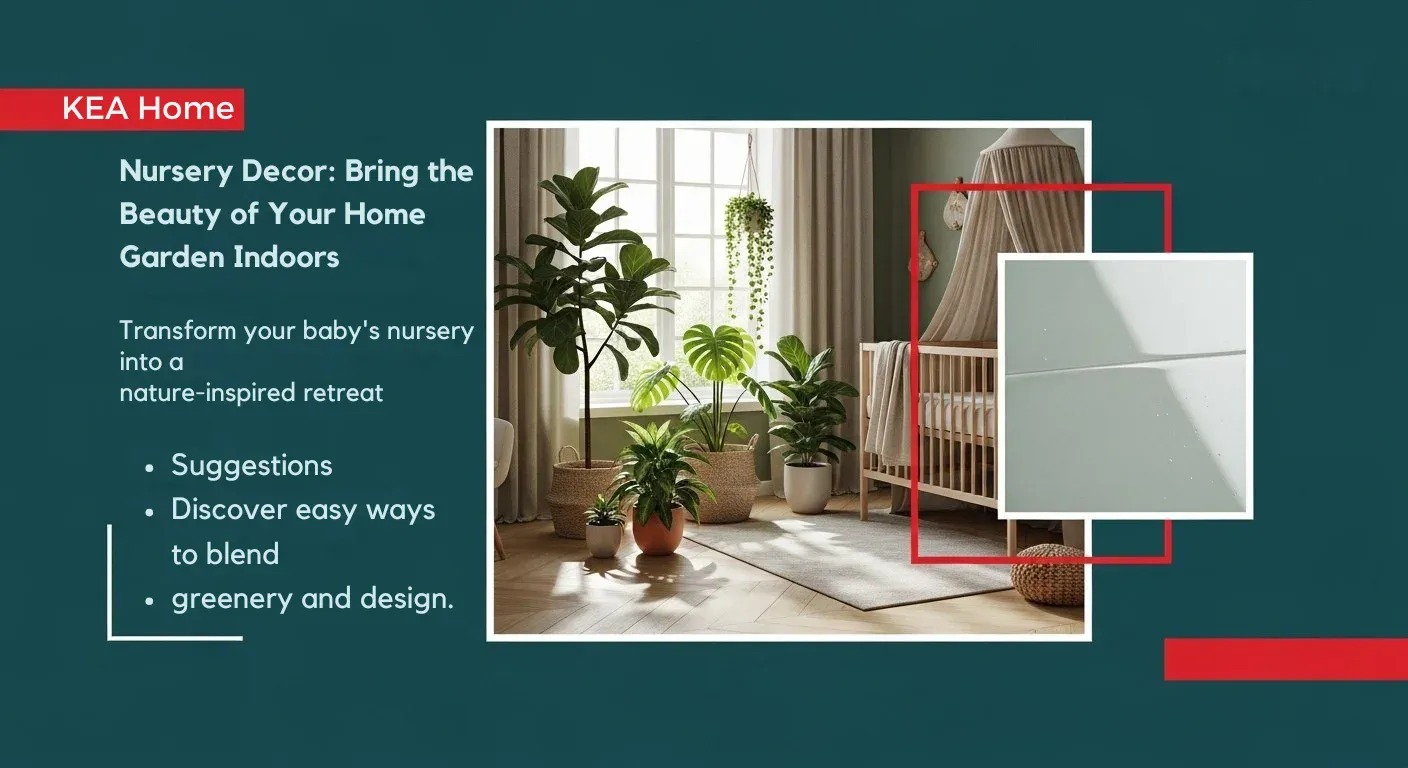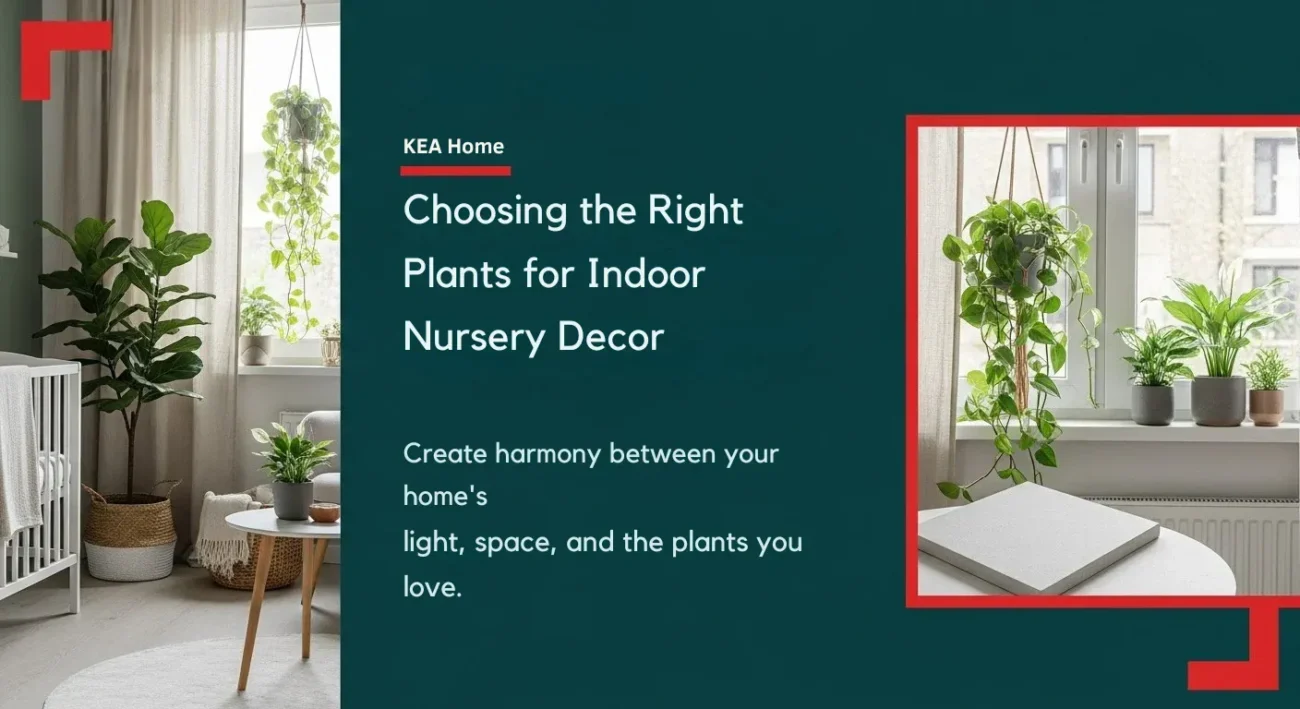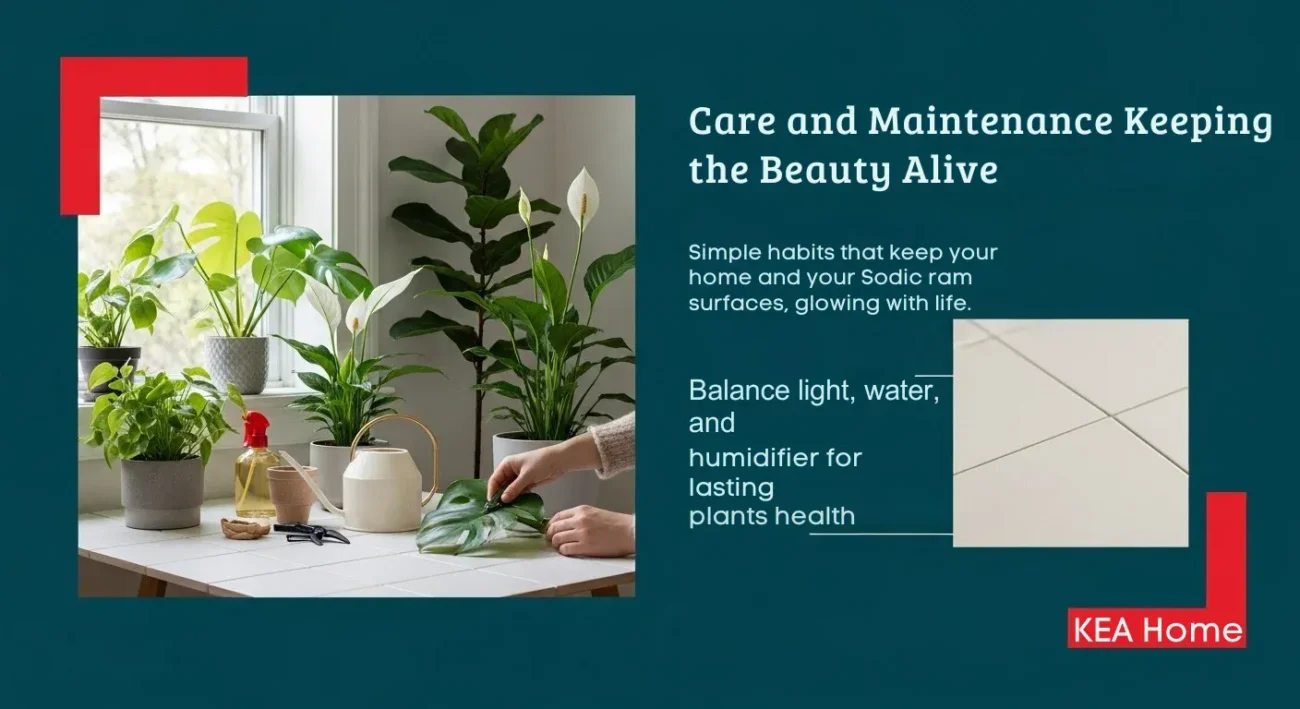
Home & Decor Blogs: DIY, Interior Design & Lifestyle Ideas
Nursery Decor: Bring the Beauty of Your Home Garden Indoors

Offers quick guidance on transforming your baby’s nursery into a serene, nature inspired retreat. Discover how to select and arrange indoor plants to create a soothing, natural aesthetic that promotes well being. Learn practical tips on choosing the right low maintenance houseplants, decorative pots, and accessories, along with styling techniques to create a cohesive and charming garden themed nursery.
Define Your Indoor Garden Style
Know the Style You Want:
Before you pick a plant or a pot, ask yourself, What kind of garden vibe do I want indoors:
- A lush, tropical oasis (think big leaves, dramatic plants).
- A calm, minimalist green space (smaller plants, clean lines).
- A cottage-garden feel (lots of variety, layered, cozy).
- A modern botanical drop-zone (few statement plants in bold containers).
Choosing a style helps everything else fall into place plants, pots, layout, even how you care for them.
Translate Outdoor Garden to Nursery Decor:
By “nursery decor” I mean treating your indoor plant space like a little garden section of your home. Think: you’d design a bed in your garden with soil, plants, grouping, maybe a trellis or edging. Indoors, that translates to: choosing a dedicated zone, picking plant combinations, using containers that look unified, incorporating plant stands or racks.
This is more than just “add a plant to your shelf”. It’s about bringing the beauty of your home garden indoors, so the space feels cohesive and intentional.
Choosing the Right Plants for Indoor Nursery Decor

Assess Light, Space and Conditions:
Indoor plants succeed when their needs match your home. From other sources: many plants can move indoors if conditions are right (light, humidity).
- How much natural light you get (south-facing vs north vs small window).
- How much space you have (floor, table, hanging).
- How dry your indoor air is (especially in air-conditioned homes).
- What kind of maintenance you are willing to do (frequent watering vs low care).
Types of Plants to Consider:
Here are categories and examples, with care pointers:
- Low maintenance foliage plants: Great if you’re busy. Plants like snake plant, pothos, peace lily (from Classy Casita’s list) are good.
- Statement plants: Big leaves, dramatic shapes. For example, a fiddle leaf fig, monstera, indoor palm. They give the “garden feel” indoors.
- Trailing/hanging plants: Use vertical space ivy, philodendron, pothos varieties, for example. French & French Interiors mention layering height and scale.
- Herbs and small plants: If you want edible plus décor, herbs are fun (especially in kitchen windows). That vertical gardens post mentions herbs indoors.
- Seasonal/flowering plants: To add color, you can bring in flowering houseplants or pots of bulbs. This adds variety and dynamic change over time.
Plant Combinations for a “Nursery Decor” Aesthetic
Rather than each plant alone, think of groups mix a tall plant, a medium plant, a trailing plant. Use similar containers for unity. Use consistent materials (terracotta, ceramic, matte black) for the vibe you chose. Also: integrate a few small decorative items (like stones, little plan-stands) but keep the plants as the stars.
Containers, Stands and Layout Making It Look Pro
Choose Containers that Match Your Home Garden Style:
The container is like the pot in your outdoor garden it sets the scene. Use materials that evoke garden charm: terracotta, rustic metal, woven baskets, or sleek minimalist concrete depending on your style. French & French Interiors highlight how container choice impacts scale and finish.
Also, pick containers with good drainage or internal saucers, especially indoors where overflow can damage floors.
Use Plant Stands, Shelves and Vertical Space:
Don’t just scatter plants at eye level. Use height plant stands, shelves, wall mounted planters so your indoor garden decor has layers, like an outdoor garden bed. The “Indoor Garden Inspiration” post mentions vertical gardens for small spaces.
Layout Zones: The Mini Indoor Garden:
Treat your plant décor like a “room within a room”. Choose one area (corner, shelf wall art, window) to build your indoor garden zone. Lay out plants with variation in height and texture. Use one statement plant plus several supporting ones. This gives a cohesive “nursery décor” effect rather than random potted plants around.
Here’s a simple table to guide your layout:
| Zone Component | Purpose | Tip |
|---|---|---|
| Statement plant | The visual anchor | Big leaf plant, placed at eye-level or floor |
| Supporting plants | Add texture, fill space | Varied heights and styles |
| Trailing/hanging plant | Adds movement and depth | On shelf edge or hanging hook |
| Containers & stands | Tie aesthetic together | Use similar materials/colours |
| Dedicated surface | Defines the zone | Use tray or mat to contain spills |
Styling and Enhancing the Indoor Garden Feel
Use Natural Materials & Garden Inspire Accents:
Take cues from your outdoor garden: stone pebbles, rustic clay pots, driftwood, woven baskets. Using these materials indoors builds continuity and authenticity. The “Creative Ways to Bring Nature Inside” post touches on layering fresh/dried/foraged materials for texture.
Colour Palette & Visual Texture:
For a garden feel, stick to greens and natural earthy tones. Add small pops of colour via flower-plants or decorative accents but don’t overdo it. Contrasting pot colours can distract; better to keep containers neutral and let the plants shine. Also mix textures: glossy leaves, feathery ferns, trailing vines this mimics the diversity of outdoor garden flora.
Add Garden Style Details:
Consider features like:
- A small watering can on display (it doubles as décor).
- Moss or pebbles on top of the pot soil to give a finished look.
- A small decorative trellis indoors for climbing plants.
- A bench or seat near this zone so it feels like a “garden corner”.
These little touches elevate the décor and make the indoor garden feel intentional.
Care and Maintenance Keeping the Beauty Alive

Light, Water, Humidity:
Plants indoors need similar considerations as outside. From “Tips from the Garden Center” blog: you must ensure light, regulate humidity, and choose correct soil.
- Make sure your plants have suitable light: bright indirect for many houseplants, but some can tolerate lower light.
- Watering: Over-watering is a common mistake. Make sure water drains, and don’t let pots sit in stagnant water.
- Humidity: Indoor air can be dry, especially with air conditioning or heating. Mist plants, group them together, or use a tray of water to boost humidity.
Soil, Repotting and Maintenance:
Indoor plants can run out of nutrients or become root-bound. Plan to repot every 1-2 years depending on growth. Use a good quality potting mix designed for indoor plants (lightweight, good drainage).
Seasonal Adjustments:
Even indoors, plants respond to seasons. Light levels change, indoor humidity shifts, room temperatures go up or down. Use these opportunities: for example, in winter, reduce watering because growth slows; in spring, consider fresh soil and fertiliser.
Sustainability and Long-Term Enjoyment
Choose Plants Mindfully:
Pick plants that match your home, lifestyle and climate. If you’ll travel often or neglect plants sometimes, choose low-care ones. Also, avoid over-buying trendy plants without planning some may struggle indoors long-term.
Repurpose and Re-use:
Use vintage pots, repurpose containers, or up-cycle items into planters. This reduces waste and adds character. The “Creative Plant Nursery Ideas” blog mentions repurposed containers and sustainable décor.
Consider the Environment:
Indoor plants can improve air quality, boost mood and provide a connection to nature. But they also have a footprint (pots, soils, fertilizers). Choose natural materials, low-waste methods, and avoid using harsh chemicals for care.
Rotating and Refreshing:
Just like a garden outside evolves, your indoor garden décor should evolve too. Rotate plants seasonally, refresh soil, change container layouts, bring in seasonal blooms or dried elements. This keeps things fresh and engaging rather than static.
FAQs
Q: Can I use outdoor garden plants indoors?
Yes with care. Many outdoor plants do fine indoors if you mimic their conditions (light, humidity). But you’ll want to transition them slowly and check for pests.
Q: My home has low light. Can I still create a nursery décor feel?
Absolutely. Choose shade tolerant plants (ferns, some philodendrons, snake plants) and use reflective surfaces or grow-lights if needed. The styling (containers, layout, décor) still applies.
Q: How often should I water indoor garden plants?
It depends on the plant, the pot, the soil and the indoor climate. As a rule: check soil moisture by sticking a finger in 2-3 cm; if dry, water. Avoid letting pots sit in water.
Q: What’s the easiest way to refresh the look once I’ve set it up?
Change a container or two, swap one trailing plant for a new variety, add a pop of colour with a seasonal bloom, and rearrange the grouping. A small change goes a long way.
Q: Will it cost a lot to maintain an indoor garden décor space?
It doesn’t have to. Once the major plants and containers are in place, maintenance costs are low (soil refresh, occasional new plants). Use repurposed containers or up cycle to save money.
Conclusion
Decorating your home with nursery-style indoor garden décor isn’t just about putting a plant here and there. It’s a thoughtful process: choosing your style, picking plants that match your space, using containers and layout that echo your home garden, and caring for the ecosystem you create. Has walked you through everything from setting the vibe to detailed care, offering more depth than many other articles you’ll find. With a bit of planning and a little creative energy, you can turn a corner of your home into a vibrant, living garden zone one that brings joy, calm and a continuous connection to nature.
